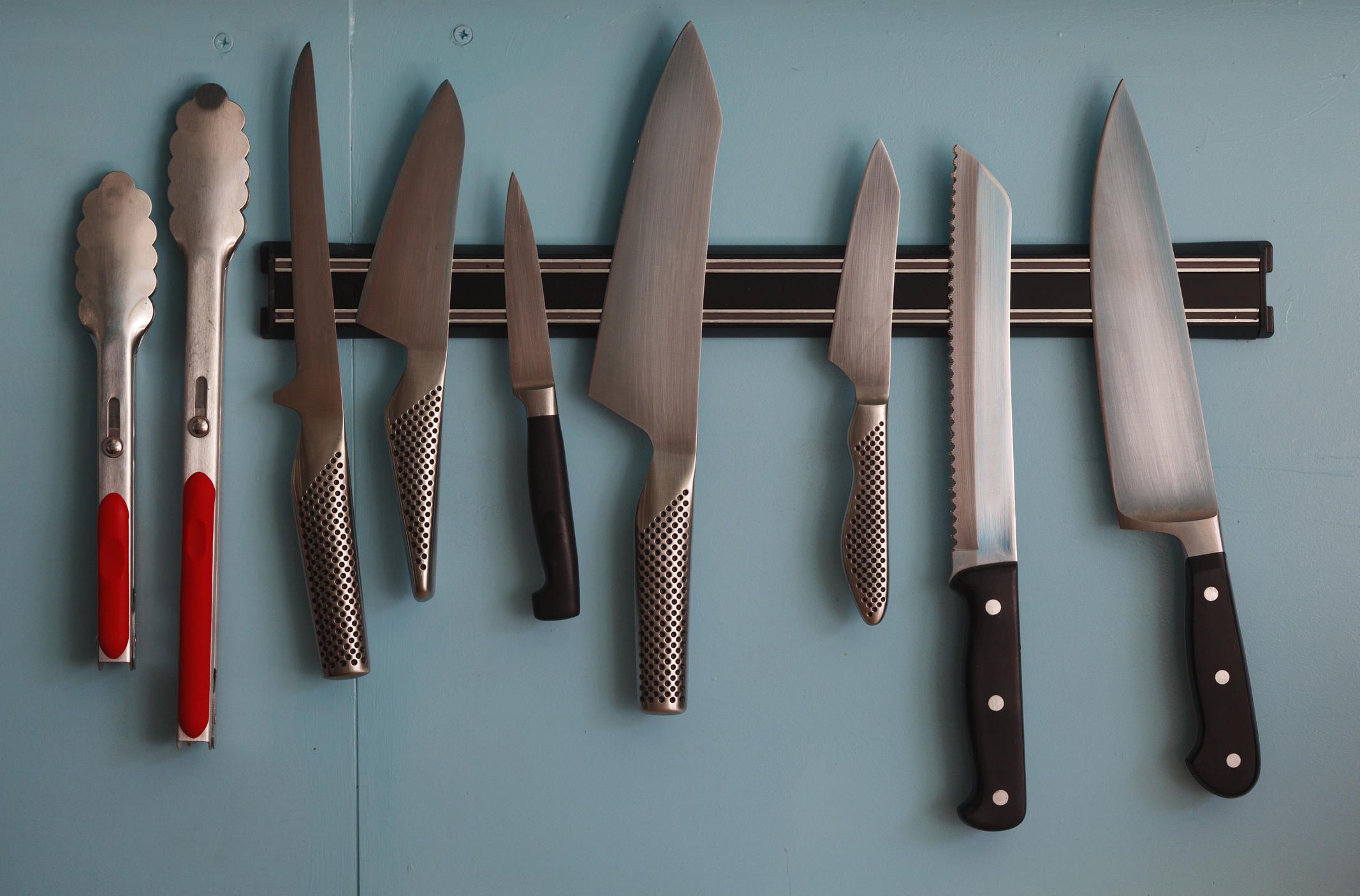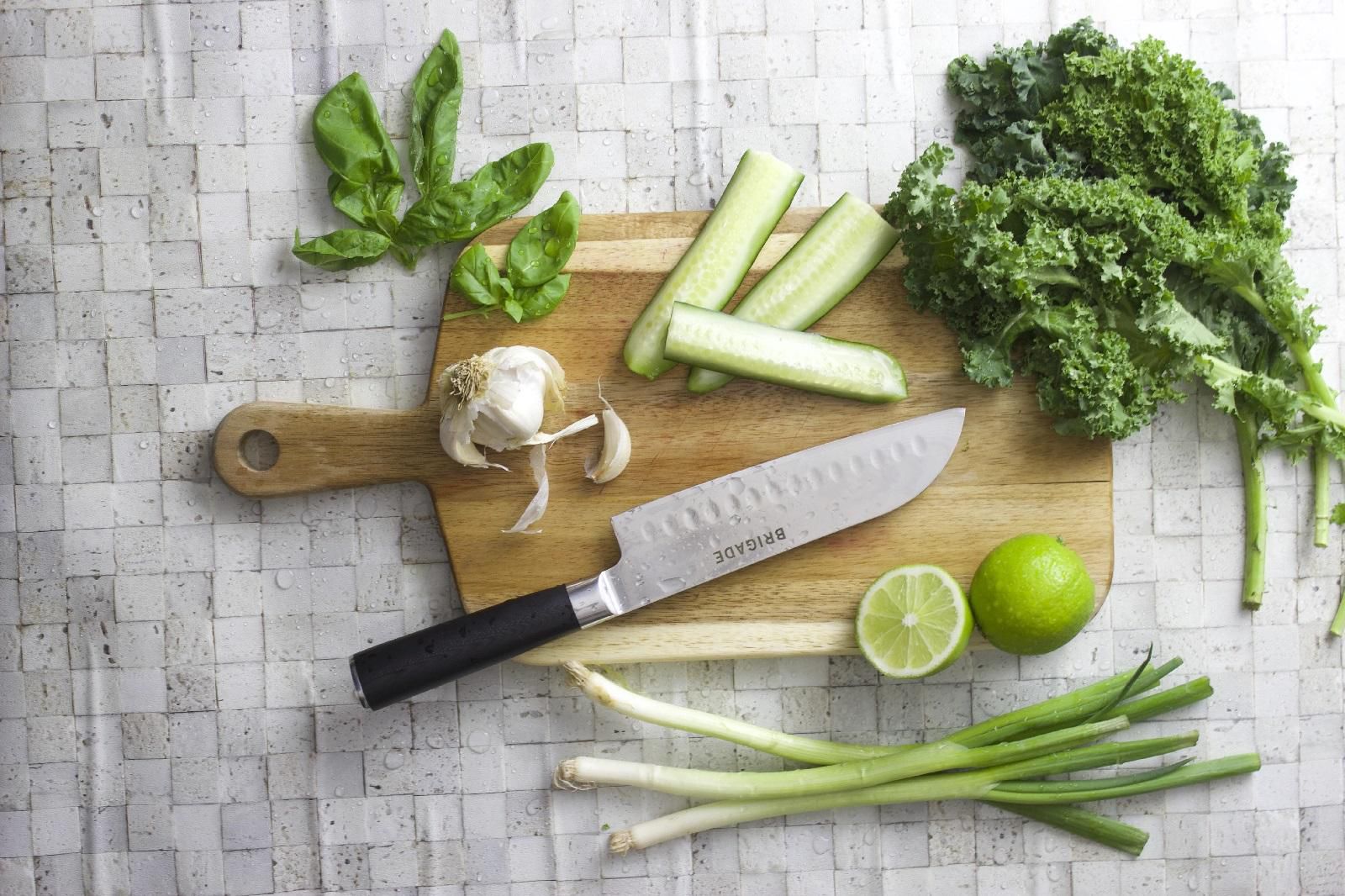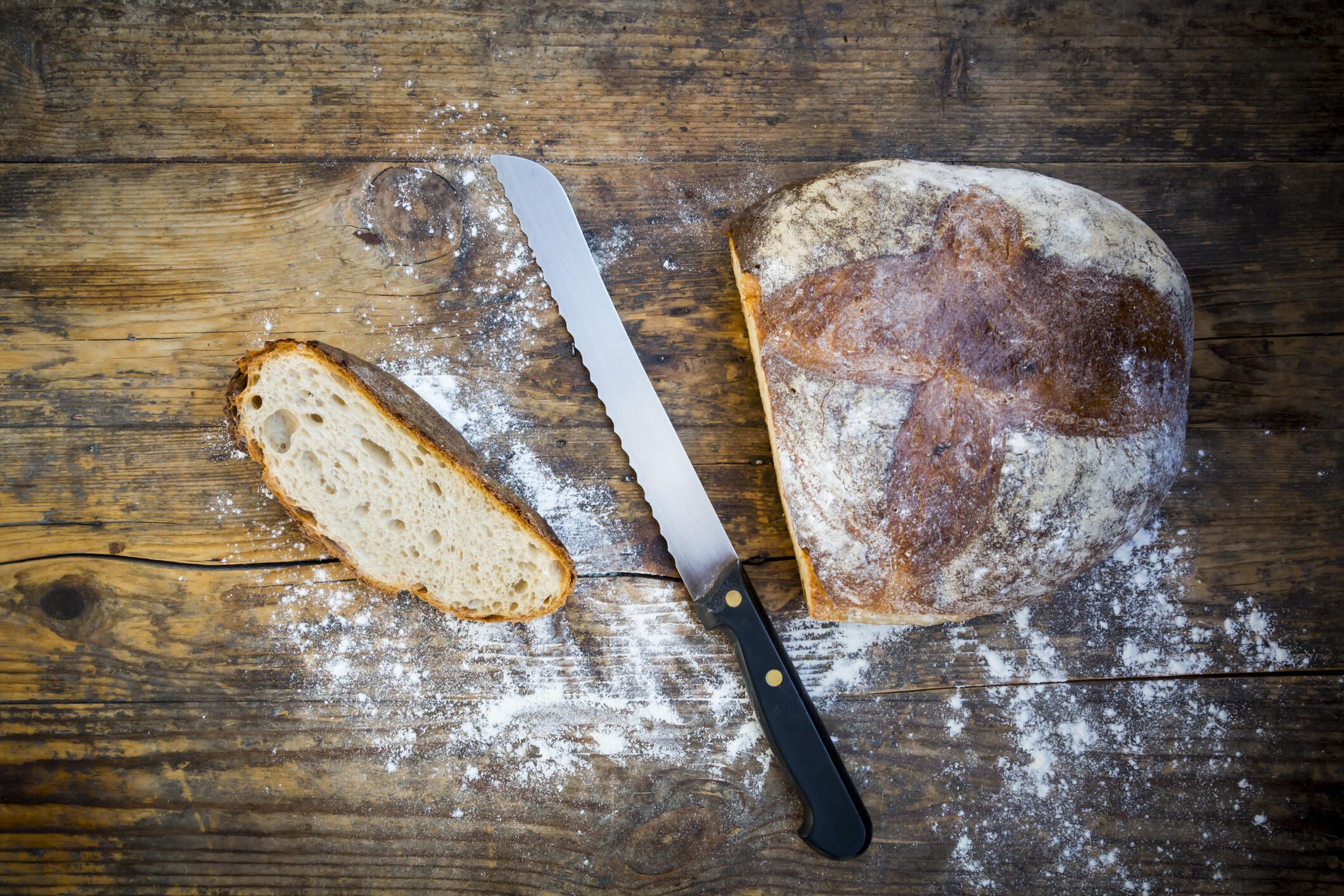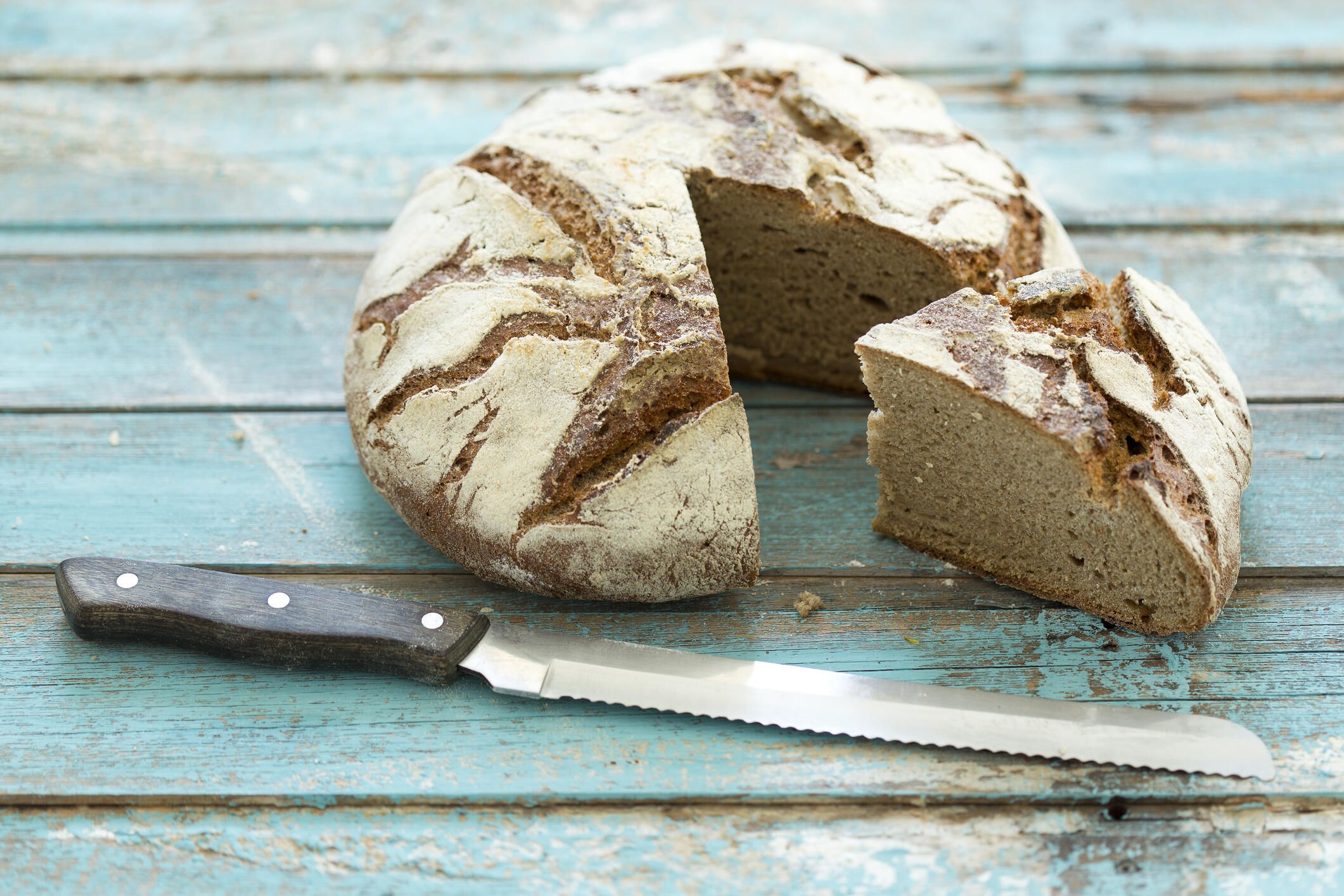These are the knives you really need in your kitchen
Whether you're an accomplished chef or just getting started, having the right set of tools will set you up for kitchen success. That starts with your kitchen knives. Unless you're sticking to boiling water and making killer PB&Js, the knives you need to chop, slice and dice matter -- both for your comfort and the ease with which you prepare your food.

Use the wrong kind of knife and your ingredients could suffer, your frustration could soar or worse, you might even injure yourself.
But the right knife can make quick work of even the most complicated meal prep. If you aren't sure which knife to use for what, have no fear. Here are the three must-have knives for your kitchen and when to use them. When you're ready to upgrade, check out eight affordable knives for the cooking enthusiast.

Chef's knife: 8- or 10-inch
If you're only going to own one knife, your best bet is to make it a quality chef's knife. The chef's knife is an all-purpose all star. Its long blade and efficient rocking motion make it extremely practical. You can use this knife to chop, slice, mince, dice and julienne just about anything.
A chef's knife usually measures about 1 inch wide, with the curve being most pronounced at the tip of the blade. While a chef's knife works well for the majority of kitchen tasks, it's not as effective for carving poultry or skinning fruits and vegetables.
Chef's knives can range from 6 to 14 inches long and cost anywhere from $30 to $300, depending on craftsmanship and materials. For home use, get one that's between 8 and 10 inches. Opt for a "full tang" knife over a "forged" style if you can spend the extra cash. Full tang means the blade runs all the way through the handle, giving the knife more balance. Moderately priced, well-reviewed models include:

Paring knife
A paring knife is a small but mighty knife made for precise work. Think of it as a mini version of the chef's knife. This knife is typically 2 to 4 inches in length with a nice, smooth blade. Because the paring knife is so small, it's ideal for peeling, slicing and trimming smaller foods.
It's also great for precision work like deveining shrimp or cutting out the hull of a strawberry. Don't underestimate the power of this petite blade. You won't have to break the bank to acquire one, either. You can pick up a good paring knife for as little as $7. Look for a 3-inch to 3.5-inch blade with a comfortable grip. These best-sellers are a good place to start:

Bread knife
As the common name implies, a bread knife is intended to cut a loaf of bread, sawing through the thick hard crust without crushing the bread's soft interior. These knives are also called serrated knives, because of their long, narrow blades with jagged, sawlike edges called serrations.
Those serrations allow the knife to saw through bread effortlessly, but they are also great for slicing slicing fruits and vegetables -- especially items with thin skins, like tomatoes. Even some cheeses meet their match with a serrated blade. The length of the blade (ideally about 10 inches) gives you leverage to get through tougher cheeses without having to throw your weight down on a chef's knife.
A serrated knife can range from $15 to $150. Look for a sharp blade between 8 and 10 inches. You'll also want a comfortable handle that keeps your grip secure. These highly rated options will likely fit the bill:
Cutlery sets
Cutlery sets often come with other hand tools like shears and include other basic blades like steak knives. If you can, find a set that includes a honing steel, a great tool for sharpening knives and keeping them in tip-top shape.
What about all the other types of kitchen knives?
There are dozens of specialty knives made for individual tasks and geared toward enthusiastic home cooks and chefs. If you're looking to expand beyond the basics, here are a few more blades you'll find sold solo and in common cutlery sets.
Boning knife: Designed for prepping poultry and meats, this knife has a sharp, maneuverable blade that gives you precision control as you separate the flesh from bones and cartilage. The curved blade follows the contours of bone and flesh.
Santoku knife: Somewhere between a chef's knife and a cleaver is the Japanese santoku knife. It often has a textured blade indented with scallops to keep food from sticking to the side of the blade. Santoku knives are great for chopping most foods in your kitchen.
Utility knife: A utility knife is another all-purpose blade. Size-wise, it's somewhere between a chef's knife and a paring knife, usually 4 to 7 inches long. You can find utility knives in straight and serrated blade styles. A serrated style is a useful addition if you already own a chef's knife and paring knife.
Cleaver: While cleavers might bring butchers and horror movies to mind, these big, bad knives are actually quite friendly in the kitchen. Characterized by a short, stocky blade, cleavers pick up where boning knives leave off, chopping through bone and tendon with ease.
Carving knife: Typically between 8 and 15 inches, a carving knife does just what'd you expect. It's intended for cutting thin slices from large cooked meats. Thinner than a chef's knife, it can precisely shave poultry, ham and roasts.
With these basic knives in your kitchen, you'll be able to tackle most any culinary technique. These are just a few of the standard knives you'll find in most off-the-shelf sets, but there are dozens of specialized varieties out there.
Once you've assembled a team of knives to tackle any task, you'll need to keep your kitchen knives razor-sharp. Don't forget to store your knives the right way, too. With the right tools at your disposal, you'll be confidently whipping up delicious meals in no time.
You should read it
- Stop scrubbing dirty pots and pans with this simple $5 kitchen tool
- Smart home technology and unpredictable hazards
- The best smart thermostats of 2020
- Use your Instant Pot to make wine: A step-by-step guide
- This essential $5 tool will keep you from scrubbing dirty pots and pans
- How will smart home equipment be lost?
- 6 ways seniors can use Google Home to make the COVID-19 quarantine easier
- This is why you should use smart lights
May be interested
- This essential $5 tool will keep you from scrubbing dirty pots and pans
 a few years later, up in burlington, vermont, for college i worked at a bruegger's bagels. there during my junior year, i baked, prepped, stocked, washed and, yes, even once prepared a bagel for then-us congressman bernie sanders (sesame, plain, not toasted if i remember correctly).
a few years later, up in burlington, vermont, for college i worked at a bruegger's bagels. there during my junior year, i baked, prepped, stocked, washed and, yes, even once prepared a bagel for then-us congressman bernie sanders (sesame, plain, not toasted if i remember correctly). - Keep your bread fresh longer with these simple tricks
 whether it's bagels, buns or brioche, here's how to get the most out of your bread.
whether it's bagels, buns or brioche, here's how to get the most out of your bread. - Easy baking recipes you can make with pantry staples
 great for when you need a little baking therapy without stressing about an extra trip to the store.
great for when you need a little baking therapy without stressing about an extra trip to the store. - 8 ways to protect your Amazon Echo privacy while working from home
 if you don't want alexa hanging on your every words, change these settings now.
if you don't want alexa hanging on your every words, change these settings now. - Amazon Echo: How to protect your privacy while working from home
 if you're worried about keeping your information private while working from home, change these alexa settings now.
if you're worried about keeping your information private while working from home, change these alexa settings now. - We tested all 4 Amazon Echo wake words. Here's what we learned about Alexa
 if you're tired of seeing your smart speaker light up when you're not talking to it, it's time to give it a new name.
if you're tired of seeing your smart speaker light up when you're not talking to it, it's time to give it a new name.






 Tips for survival in Knives Crash and play guides
Tips for survival in Knives Crash and play guides Pocket experience choosing to buy kitchen from eating good hot pot, cheap for the family
Pocket experience choosing to buy kitchen from eating good hot pot, cheap for the family 4 simple ways to open the lid of food cans when there is no opener
4 simple ways to open the lid of food cans when there is no opener Beautiful kitchen - The most beautiful kitchen pattern
Beautiful kitchen - The most beautiful kitchen pattern The 11 most dangerous items in the kitchen may not be known
The 11 most dangerous items in the kitchen may not be known